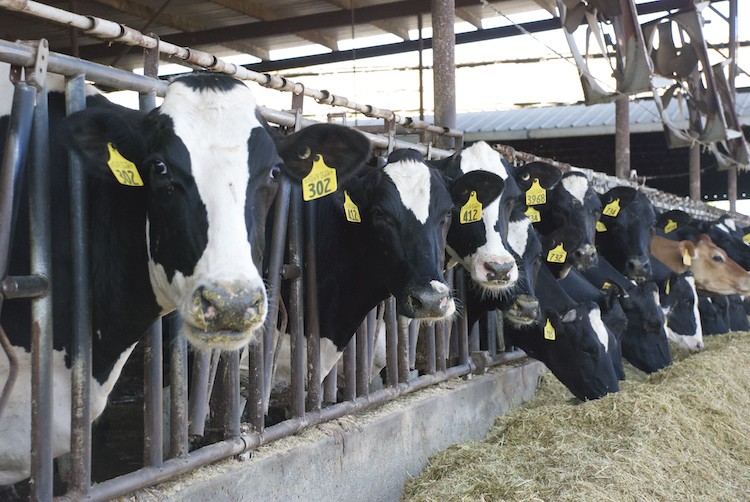
Some farms adjust their feeding schedule in the summer and deliver feed at night, thinking that cows will eat more when it is cooler outside. While the logic behind it makes sense, according to South Dakota State University’s Isaac Salfer, this schedule does not really suit a cow’s natural behavior.
Salfer, an assistant professor in dairy herd management, talked about cows’ biological rhythms and eating patterns during an I-29 Moo U Dairy Podcast. By looking at data from grazing cattle, he said we are able to understand what the natural schedule for dairy cows would look like.
He explained that cows tend to follow a pattern where they eat a lot in the early morning, slow intake in the late morning and early afternoon, and have a spike in consumption mid-afternoon. Then they reduce intake overnight, from about 9 p.m. to 4 a.m. He said this schedule likely developed as cattle in the wild adapted their eating to avoid predators.
“In modern dairy systems, the number one stimulus for feed intake is delivering fresh feed,” Salfer said. “Cows still have a drive to go eat when fresh feed is delivered, no matter what time of day.”
This means that if a farm feeds at night to avoid hot weather, cows will get up and eat. A schedule like this can cause some issues, though.
“Cows have this strong biological drive to not eat at night,” Salfer said. “They will go up to eat when you deliver feed, but they end up slug feeding or eating at a faster rate over a shorter period of time, which can lead to problems with rumen acidosis.”
As for a summer feeding strategy, Salfer said, “I would try to get ahead of the cows and feed a little bit earlier.”
By feeding in the early morning hours, a farm can still avoid the heat of the day while more closely matching the cows’ biological rhythm.
An even better option would be to feed cows more than once. “If you can feed multiple times per day, that will give cows a second stimulus to go up to the feedbunk, and it will spread intake throughout the day,” he said.
Ideally, that last feeding should be around 3 p.m., when cows are approaching their second wave of intake. Try to not deliver feed after 5 p.m., Salfer recommended, as cows naturally have a steep drop in intake around 8 or 9 p.m.








